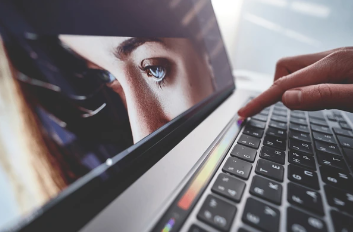Masking in Premiere Pro

Masking in Premiere Pro unlocks a world of creative possibilities for video editors. It allows you to isolate specific areas of your footage, enabling selective adjustments, effects, and compositing techniques. This in-depth guide delves into the world of masking, equipping you with the knowledge and skills to elevate your video projects.
Understanding Masks: The Power of Selective Control
Imagine you have a clip with a beautiful sunset behind your subject. But an unwanted object like a power line disrupts the scene. Masking lets you isolate the subject, allowing you to blur or remove the power line without affecting the rest of the image. This is just one example – masking opens doors to various creative applications:
- Color Correction: Apply color grading adjustments only to specific areas of your footage.
- Adding Effects: Isolate objects and apply effects like blurs, glows, or distortions.
- Compositing: Combine multiple video layers by masking out unwanted areas, creating seamless compositions.
- Tracking: Isolate and track moving objects for precise effects application.
The Masking Workflow in Premiere Pro
Masking in Premiere Pro involves a three-step process:
- Applying a Mask: This involves choosing the type of mask and defining its shape on your clip.
- Refining the Mask: Adjust the mask's properties like feathering and expansion for a smooth transition.
- Manipulating the Masked Area: Apply effects, adjustments, or use the masked area to reveal another video layer.
Diving Deep: Mask Creation Options
Premiere Pro offers three primary mask shapes to choose from:
- Ellipse: Ideal for circular or oval shapes, perfect for isolating faces or objects.
- Rectangle: Creates a rectangular mask, suitable for masking out unwanted elements with straight edges.
- Pen Tool: Provides the most flexibility, allowing you to create freehand masks for complex shapes.
Applying and Defining Your Mask
- Select your clip in the timeline.
- Navigate to the Effects Controls panel (usually located above the Program Monitor).
- Locate the Opacity section. Here, you'll find the mask creation icons: ellipse, rectangle, and pen tool.
- Choose your desired mask shape and click on the corresponding icon.
- In the Program Monitor, click and drag to define the mask's shape based on your chosen tool.
- Ellipse & Rectangle: Click and drag to adjust the size and position.
- Pen Tool: Click to create points defining the mask's outline. Double-click the first point to close the shape.
Refining Your Mask: Feathering and Expansion
- Feathering: Softens the edges of your mask, creating a smooth transition between the masked and unmasked areas. Adjust the feathering value in the Effects Controls panel for a more natural look.
- Expansion: Controls how far the mask extends beyond the defined shape. This can be helpful for fine-tuning the selection, especially with feathered edges.
Manipulating the Masked Area: Unleashing Creativity
Once your mask is defined, you can leverage its power in various ways:
- Effects: Apply effects like blurs, glows, or color correction to the masked area only. The effect will only be visible within the defined mask boundaries.
- Opacity: Adjust the opacity of the masked area to create transparency or reveal another video layer placed underneath.
- Tracking: Premiere Pro offers mask tracking features. This allows you to track moving objects within the mask, keeping the effect or adjustment isolated even as the object moves.
Advanced Masking Techniques:
Masking opens doors to even more creative possibilities:
- Nested Masks: Create masks within masks for complex selections.
- Rotoscoping: Isolate and animate moving objects frame by frame for a cutout animation effect.
- Keyframing: Animate the mask's shape, position, or feathering over time for dynamic effects.
Tips and Tricks for Effective Masking
- Start Simple: Begin with basic shapes and effects before venturing into complex masking techniques.
- Use High-Resolution Footage: Working with high-resolution footage provides more flexibility and cleaner results, especially when dealing with fine details.
- Preview Often: Utilize the Program Monitor to preview your mask adjustments in real-time.
- Experiment and Refine: Masking is an iterative process. Don't be afraid to experiment and refine your mask for optimal results.
Conclusion: Mastering the Art of Masking
By incorporating masking techniques into your Premiere Pro workflow, you unlock a powerful toolset for enhancing your video productions. From subtle adjustments to mind-bending effects, masking empowers you to achieve a wide range of creative visions. So, dive into the world of masking, experiment, and unleash your creativity to bring



